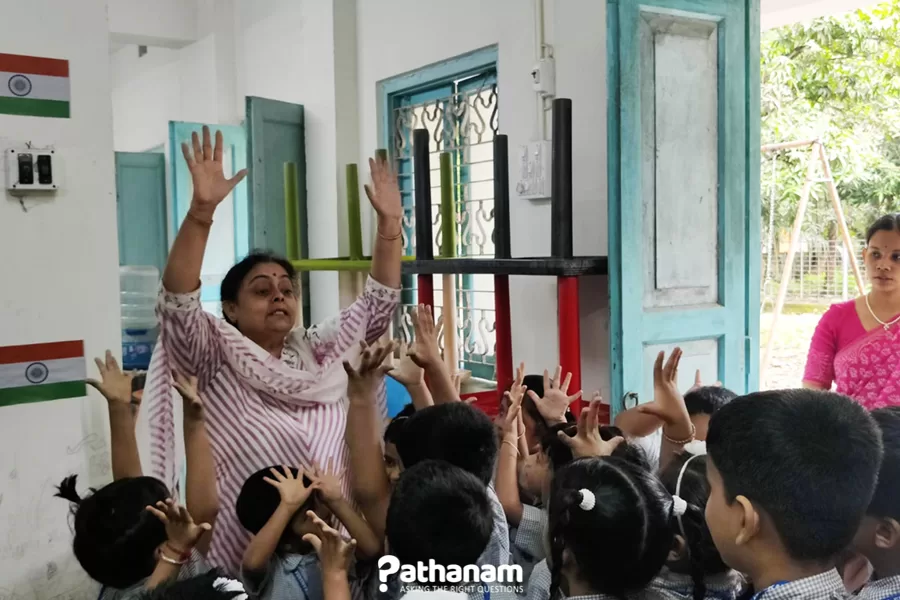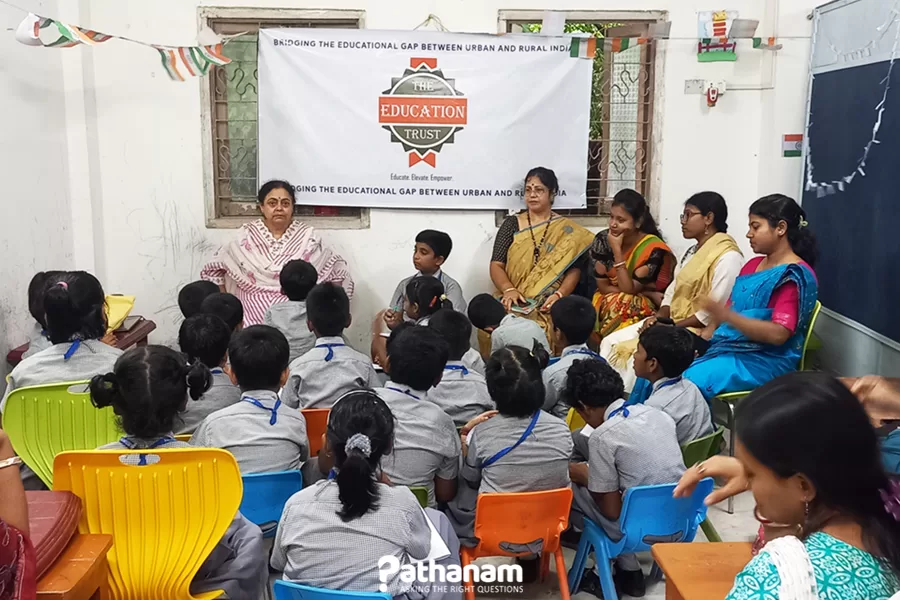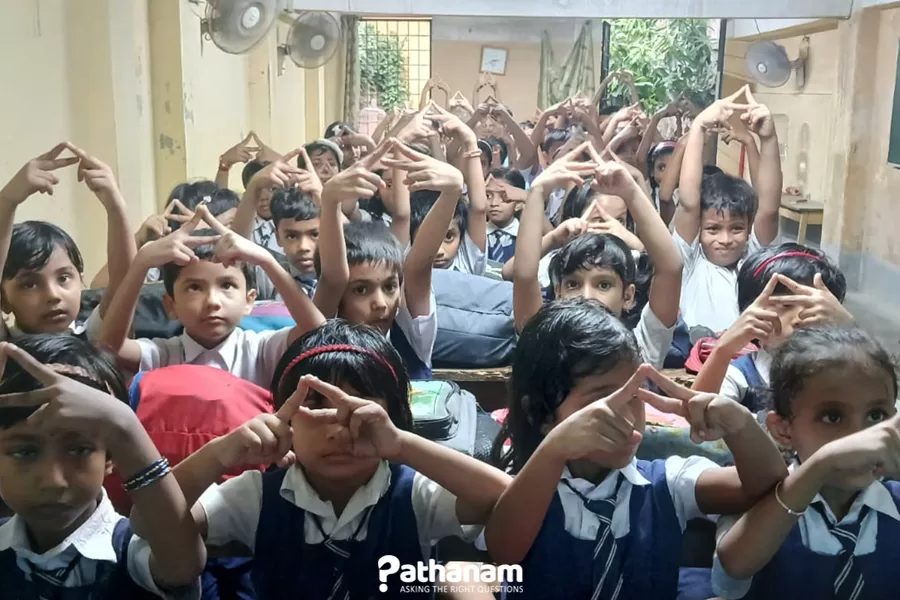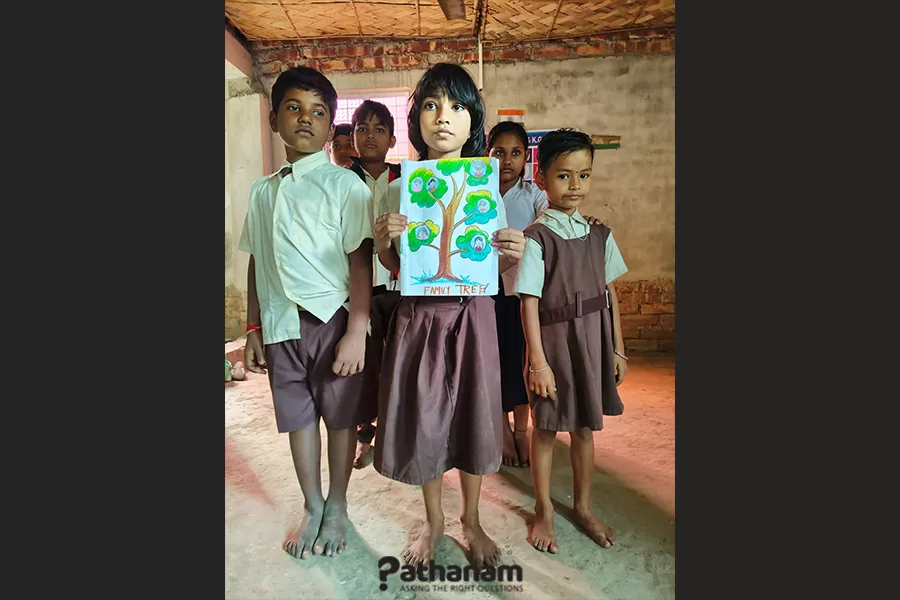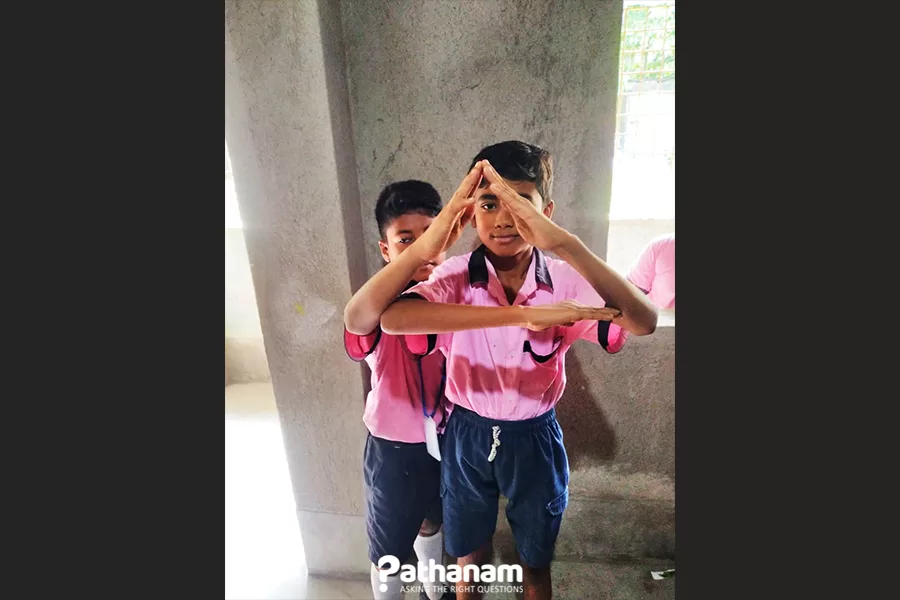Art Integrated Learning (AIL)
From Screens to Dreams — Transforming Education Together.
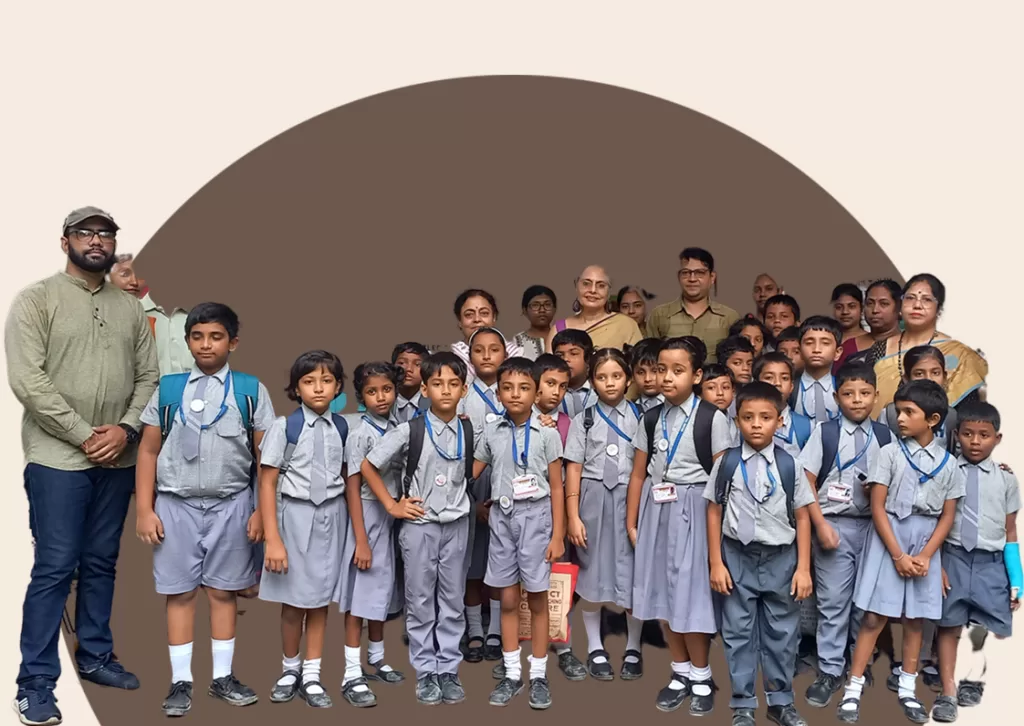
Art Integrated Learning – A Holistic Revolution in Indian Education
In a country as diverse and dynamic as India, where rote learning has long dominated classrooms, Art Integrated Learning (AIL) is breathing fresh life into education. Imagine a classroom where history isn’t just dates and facts but a vibrant nukkad natak (street play) bringing freedom fighters to life. Picture math lessons where students explore symmetry through kolam designs or understand fractions via the beats of a tabla. This is AIL—a transformative approach that doesn’t just include art in education but makes art the very heartbeat of learning.
Why AIL? Because Learning Should Be Alive!
For too long, Indian education has been trapped in the “chalk-and-talk” cycle—teachers lecturing, students memorizing, and creativity taking a backseat. But AIL shatters this monotony. It’s not about replacing textbooks with paintbrushes; it’s about using dance, drama, music, and visual arts to make concepts stick in a way that blackboard diagrams never could.
- Math + Art? Yes! Rajasthani mandana art teaches geometry, while Carnatic music rhythms explain time signatures.
- Science + Theatre? Absolutely! Role-playing photosynthesis makes it unforgettable.
- Languages + Folk Art? Perfect! Writing dohas (couplets) in Hindi or composing haikus in English boosts linguistic creativity.
The Indian Edge: Culture Meets Classroom
India’s rich artistic heritage—from Warli paintings to Kathakali performances—isn’t just for museums; it’s a goldmine for learning. AIL taps into this cultural wealth, making education relatable and exciting. When students learn about the Indus Valley Civilization by crafting terracotta pots or understand democracy through a mock panchayat role-play, lessons stop being abstract and start becoming experiences.
More Than Marks: Building Thinkers, Not Just Test-Takers
In a system obsessed with ranks, AIL is a quiet revolution—one that values creativity, critical thinking, and emotional growth as much as academic scores. It’s about:
Learning by Doing – No more passive listening; students create, perform, and engage.
Emotional Connection – Art helps express feelings, reducing stress and building confidence.
Inclusivity – Children with different learning styles (visual, auditory, kinesthetic) all thrive.
The Future? A Classroom That Feels Like a Festival!
Imagine schools where lessons feel like celebrations—where every subject is an adventure waiting to unfold. That’s the power of AIL. It’s not just a teaching method; it’s a movement—one that can redefine Indian education, making it as colorful, dynamic, and boundless as India itself.
So, let’s move beyond memorization. Let’s make learning joyful, meaningful, and unforgettable—one brushstroke, one rhythm, one act at a time.
Because education shouldn’t just fill minds—it should ignite souls.
Pathanam’s Artistic Revolution: Bridging Rural and Urban Classrooms Through Art-Integrated Learning
In the vibrant tapestry of India’s education system, where tradition meets modernity, Pathanam has emerged as a torchbearer of change, weaving the magic of Art-Integrated Learning (AIL) into the hearts and minds of students across West Bengal. Inspired by the timeless wisdom of Kabi Guru Rabindranath Tagore, who believed that education without art is like a sky without stars, Pathanam is redefining learning—one brushstroke, melody, and performance at a time.
From Kolkata’s Elite Schools to Sundarbans’ Remote Villages: AIL for All
What makes Pathanam’s mission truly special? Inclusivity. Whether it’s the polished hallways of Kolkata’s prestigious South Point School or the humble classrooms of the Sundarbans, Pathanam ensures that no child is left behind.
In Urban Schools: AIL isn’t just an add-on—it’s a creative upgrade to the existing curriculum. Imagine history lessons turning into theatrical performances or science concepts explained through dance and music!
In Rural Schools: Where resources are scarce but imagination is limitless, Pathanam’s AIL modules are designed to thrive. Using locally available materials, folk art, and traditional storytelling, learning becomes fun, engaging, and deeply rooted in Indian culture.
The Guiding Light: Dr. Sharbari Banerjee
Behind this educational revolution stands Dr. Sharbari Banerjee, a visionary musicologist and art educationist from Delhi, associated with DEAA, NCERT. With her expertise, she has been training teachers across Bengal’s bustling cities and serene villages, turning them into AIL ambassadors.
Her approach? “Each One, Teach One.” By empowering teachers first, she ensures that the ripple effect of AIL spreads far and wide. A teacher in Kolkata trains another in Murshidabad, who then inspires educators in Cooch Behar—creating a chain reaction of creativity that transcends boundaries.
Why This Matters for India’s Future
In a country as diverse as India, where every state sings a different tune and every village tells a different story, AIL isn’t just pedagogy—it’s a celebration of our roots. Pathanam’s work is more than an educational initiative; it’s a cultural movement, ensuring that:
- Rural students get the same exposure as their urban counterparts.
- Traditional Indian arts find a rightful place in modern classrooms.
- Teachers become artists, and artists become teachers, blurring the lines between learning and living.
The Road Ahead: Painting a Brighter Tomorrow
Pathanam’s journey is just beginning. With every school that embraces AIL, with every child who discovers joy in learning, and with every teacher who becomes a storyteller, India moves closer to an education system that nurtures not just minds, but souls.
As Tagore once said, “The highest education is that which does not merely give us information but makes our life in harmony with all existence.”
And Pathanam? Well, they’re making sure that harmony is felt in every corner of Bengal—one art-filled lesson at a time.
Let’s paint, sing, dance, and learn—the Indian way!
The Magic of Art-Integrated Learning (AIL) & Pathanam’s Revolutionary Impact
Imagine a classroom where math isn’t just numbers on a board but a vibrant rangoli pattern, where history isn’t just dates but a lively street play, and science isn’t just formulas but the rhythm of a dholak explaining sound waves. That’s the power of Art-Integrated Learning (AIL)—a game-changer in Indian education!
Why AIL is a Superpower for Young Minds
AIL isn’t just about making learning fun—it’s about making it stick. Here’s how it’s transforming India’s future:
- Boosts Creativity & Critical Thinking – From clay modeling to folk dances, kids learn to think outside the textbook.
- Connects with Culture – Whether it’s learning fractions through laddoo division or geography through Warli art, AIL roots education in Indian traditions.
- Makes Learning Unforgettable – Active, hands-on experiences mean kids remember lessons way better than rote memorization.
- Bridges Gaps – Shy students speak up through drama, kinesthetic learners thrive through movement, and everyone finds their unique way to shine.
Pathanam: West Bengal’s Education Revolution
From the buzzing classrooms of Kolkata’s elite schools to the serene villages of the Sundarbans, Pathanam is rewriting education with AIL. Here’s how:
- Breaking Barriers – No fancy infrastructure? No problem! Pathanam proves that creativity, not costly tools, is the real key to learning.
- Empowering Teachers – By training educators to blend art into lessons, Pathanam is turning ordinary classrooms into hubs of innovation.
- Reaching Every Child – Whether in a metro or a mud-school, Pathanam ensures no child is left behind in this joyful learning revolution.
The Bigger Picture: A New India, One Creative Mind at a Time
Pathanam isn’t just changing how kids learn—it’s shaping who they become. Confident, culturally rooted, and curious, the students of today are the problem-solvers of tomorrow. And as West Bengal leads this wave, the rest of India watches, learns, and gets ready to join the movement.
The future of education isn’t just bright—it’s colorful, musical, and bursting with creativity!
Let’s learn not just for exams, but for life.
Pathanam: Rekindling the Magic of Art-Integrated Learning in Rural Bengal’s Classrooms
Once upon a time, in the heart of Bengal, education wasn’t just about memorizing facts—it was a celebration of creativity, a dance of ideas, and a song of discovery. Gurudev Rabindranath Tagore’s Shantiniketan was a living testament to this philosophy, where learning bloomed under open skies, intertwined with music, theatre, and the vibrant hues of local art. But somewhere along the way, the soul of this holistic education faded in rural Bengal, replaced by the monotony of rote learning.
Enter Pathanam—a movement to bring back the magic of Art-Integrated Learning (AIL) to the classrooms of rural West Bengal and the Andaman & Nicobar Islands. Partnering with The Education Trust and Rotary International District 3291, Pathanam is reigniting the spark of creativity, ensuring that every child, no matter how remote their village, experiences the joy of learning through art.
Where Textbooks Meet Patachitra and Jatra:
- Mathematics coming alive through the rhythmic beats of Baul songs.
- History unfolding in the dramatic flair of Jatra (Bengal’s beloved folk theatre).
- Science lessons painted in the vibrant strokes of Patachitra (traditional scroll art).
This isn’t just learning—it’s an experience, a festival of knowledge where every child becomes an artist, a storyteller, and an explorer.
From Kolkata’s Classrooms to Rural Bengal’s Heartlands
The journey began with South Point Junior School, where teachers trained in AIL methodologies, blending art seamlessly into lessons. Now, this model is spreading like wildfire across rural Bengal—Birbhum, Purulia, Bankura, Sundarbans, and beyond. Teachers, once bound by rigid syllabi, now wield paintbrushes, tablas, and folk tales to make lessons unforgettable.
Why Art? Because Learning Should Feel Like a Celebration!
Pathanam proves what Tagore always believed—art isn’t an extra, it’s essential. When kids learn through Alpana patterns or act out a Gambhira song, they don’t just memorize—they feel, they create, they remember. It’s education that touches the mind, heart, and soul.
The Future? A Canvas of Possibilities
This isn’t just a program—it’s a revolution. A return to our roots, where classrooms echo with Kobigan (poetic duels), where textbooks are companions to Chhau dance, and where every child discovers that learning can be as joyful as a monsoon jhumur performance.
Pathanam isn’t just teaching Bengal’s children—it’s reawakening the artist in every learner. And in doing so, it’s scripting a brighter, more colourful future for rural India.
Join the movement. Let’s paint education with the colours of creativity!
